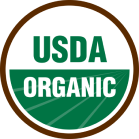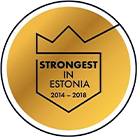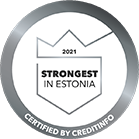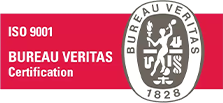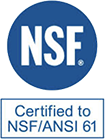CIP Equipment
CIP Disinfection for Food, Beer & Beverage Industry
CIP generators are a significant advancement in anolyte and catolite production technology. Its main features are:
- Minimal maintenance.
- State-of-the-art reactor cell technology, with an extended operating life, dramatically improving generator performance.
- Considerable decrease in costs.
- On-demand solutions.
- Eco-friendly and highly effective solutions.
- Anolyte 500ppm FAC @ pH 6.5.
- Catalyte 1000ppm NaOH @ pH >12.
- Distinct anolyte and catolite reactor cell technologies.
- Extremely low waste generation, less than 0.5% of the device's capacity.
- Easy anolith production with factory settings according to customer needs and specifications.
- Simplified installation and operation.
- High quality components with European standard.
- Low salt/chloride technology that lessens our customers' corrosion concerns.
- 28 – 34 ppm chlorides in final CIP solutions plus CIP make-up water chlorides
- Easy-to-use interface, ensuring that solutions are always within their specified parameters and are producing Anolyte and Catalyte of consistent quality.
- Equipped with remote monitoring for peace of mind. (GSM or Ethernet).
Specifications of Envirolyte CIP Anolite/Catolite Generators
| Specifications/Models | Envirolite CIP-20/20 | Envirolite CIP-40/40 | Envirolite CIP-100/100 | Envirolite CIP-200/200 | Envirolite CIP-300/300 |
| Output Capacity | ~20 LPH ANW anolyte with pH ~6.0 – 7.0 (can be regulated) and ~500-550 ppm FAC; ~20 LPH of catholyte with pH ~ 12.2-12.5 and ~ 0.8-1.0 g/L of NaOH | ~40 LPH of ANW anolyte with pH ~ 6.0 – 7.0 (can be regulated) and ~500-550 ppm FAC; ~40 LPH of catholyte with pH ~ 12.2-12.5 and ~ 0.8-1.0 g/L of NaOH | ~100 LPH ANW anolyte with pH ~6.0 – 7.0 (can be regulated) and ~500-550 ppm FAC; ~100 LPH of catholyte with pH ~ 12.2-12.5 and ~ 0.8-1.0 g/L of NaOH | ~200 LPH ANW anolyte with pH ~6.0 – 7.0 (can be regulated) and ~500-550 ppm FAC; ~200 LPH of catholyte with pH ~ 12.2-12.5 and ~ 0.8-1.0 g/L of NaOH | ~300 LPH ANW anolyte with pH ~ 6.0 – 7.0 (can be regulated) and ~500-550 ppm FAC; ~300 LPH of catholyte with pH ~ 12.2-12.5 and ~0.8-1.0 g/L of NaOH |
| Production mode | Either independent production of anolyte and catolite or simultaneous production of both fluids. Operation is controlled by the level switches in the anolyte and catolite tanks | Either independent production of anolyte and catolite or simultaneous production of both fluids. Operation is controlled by the level switches in the anolyte and catolite tanks | Either independent production of anolyte and catolite or simultaneous production of both fluids. Operation is controlled by the level switches in the anolyte and catolite tanks | Either independent production of anolyte and catolite or simultaneous production of both fluids. Operation is controlled by the level switches in the anolyte and catolite tanks | Either independent production of anolyte and catolite or simultaneous production of both fluids. Operation is controlled by the level switches in the anolyte and catolite tanks |
| Power Supply | 220VAC / One Phase / 50-60Hz | 220VAC / One Phase / 50-60Hz
| 220VAC / One Phase / 50-60Hz | 380 VAC / Three Phase / 50-60 Hz | 380 VAC / Three Phase / 50-60 Hz |
| Salt consumption to generate ~500 ppm FAC and catholyte with ~1.0 g/L NaOH | ~1.5 g per 1 L of anolyte and ~-3.8 g per 1 L of catholyte | ~1.5 g per 1 L of anolyte and ~-3.8 g per 1 L of catholyte
| ~1.5 g per 1 L of anolyte and ~-3.8 g per 1 L of catholyte | ~1.5 g per 1 L of anolyte and ~-3.8 g per 1 L of catholyte | ~1.5 g per 1 L of anolyte and ~-3.8 g per 1 L of catholyte |
| Semi-automatic washing | + | + | + | + | + |
| Acid pump to wash the cells | + | + | + | + | + |
| Brine Pump | + | + | + | + | + |
| Peristaltic Control Pump for Anolyte Generator Cathodic Chamber | + | + | + | + | + |
| Peristaltic Control Pump for Anode Chamber of Catalyte Generator | + | + | + | + | + |
| Peristaltic control pump for anolyte pH regulation | + | + | + | + | + |
| Inlet Valves | + | + | + | + | + |
| Flow & Pressure Switches/Controllers | + separate for each platform | + separate for each platform | + separate for each platform | + separate for each platform | + separate for each platform |
| Conductivity sensor to control saturation and brine consumption | + | + | + | + | + |
| Level switch | + Independent for anolith and catolite tanks | + Independent for anolith and catolite tanks | + Independent for anolith and catolite tanks | + Independent for anolith and catolite tanks | + Independent for anolith and catolite tanks |
| Burst level switch | Optional | Optional | Optional | Optional | Optional |
| Audible overflow alarm | Optional | Optional | Optional | Optional | Optional |
| Extra 230 VAC socket in the electrical panel | Optional | Optional | Optional | Optional | Optional |
| Durability | Able to withstand harsh conditions such as dust and high humidity | Able to withstand harsh conditions such as dust and high humidity | Able to withstand harsh conditions such as dust and high humidity | Able to withstand harsh conditions such as dust and high humidity | Able to withstand harsh conditions such as dust and high humidity |
| Cell type | 1 x R-40ANW 1 x R-60C | 1 x R-80ANW 1 x R-120C | 1 x R-120ANW 1 x R-300C | 1 x R-200ANW 1 x R-400C | 1 x R-300ANW 1 x R-600C |
| Life expectancy of electrodes and membrane | ~ 5 – 7 years | ~ 5 – 7 years | ~ 5 – 7 years | ~ 5 – 7 years | ~ 5 – 7 years |
| Accessories | LLDPE Tubing + Kynar Fittings | LLDPE Tubing + Kynar Fittings | LLDPE Tubing + Kynar Fittings | LLDPE Tubing + Kynar Fittings | LLDPE Tubing + Kynar Fittings |
PLC Control: Unitronics/Vision 130 or Vision 280 | + | + | + | + | + |
| Remote Control Features | Optional Ethernet or GSM or Modbus – needs to be specified when ordering. | Optional Ethernet or GSM or Modbus – needs to be specified when ordering. | Optional Ethernet or GSM or Modbus – needs to be specified when ordering. | Optional Ethernet or GSM or Modbus – needs to be specified when ordering. | Optional Ethernet or GSM or Modbus – needs to be specified when ordering. |
Economy
How much can I save with Envirolyte solutions?
Responsibility
How toxic are my current processes?
Challenge
Take the Challenge of the Gallon
